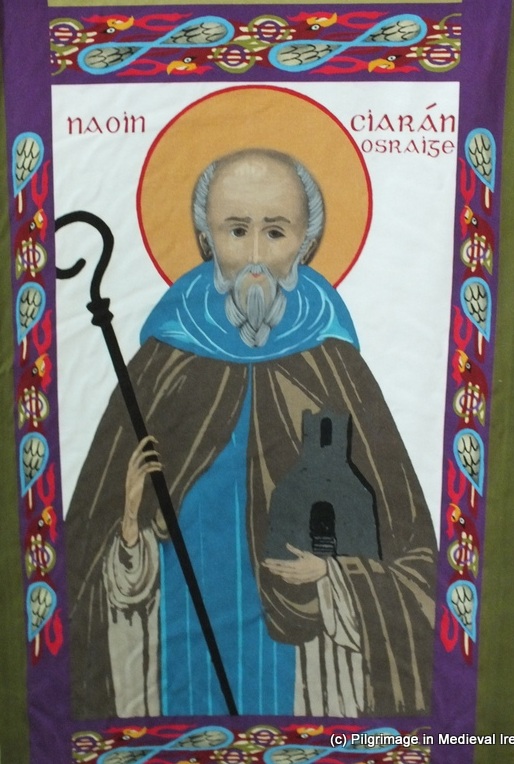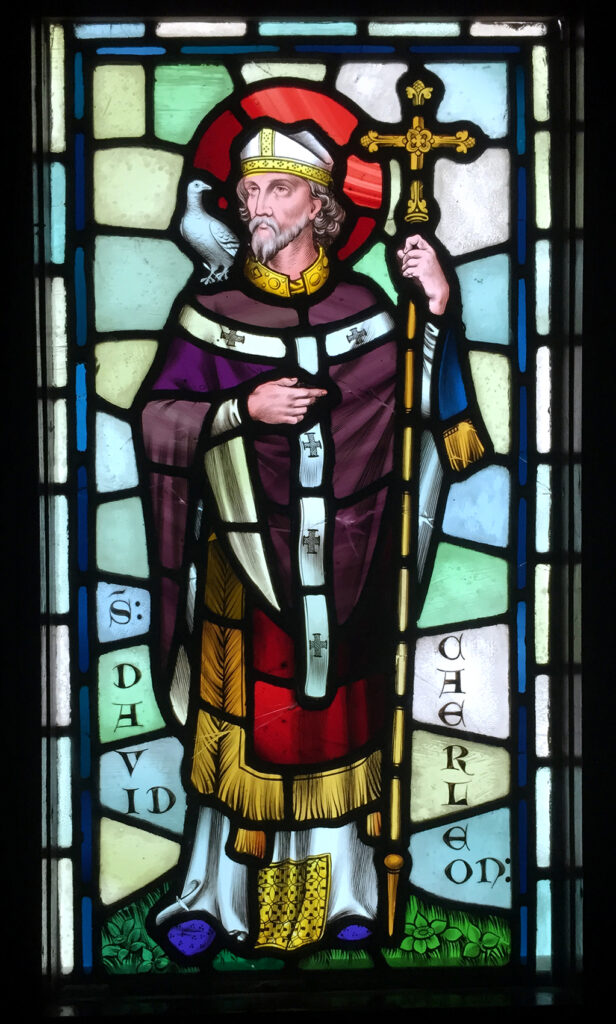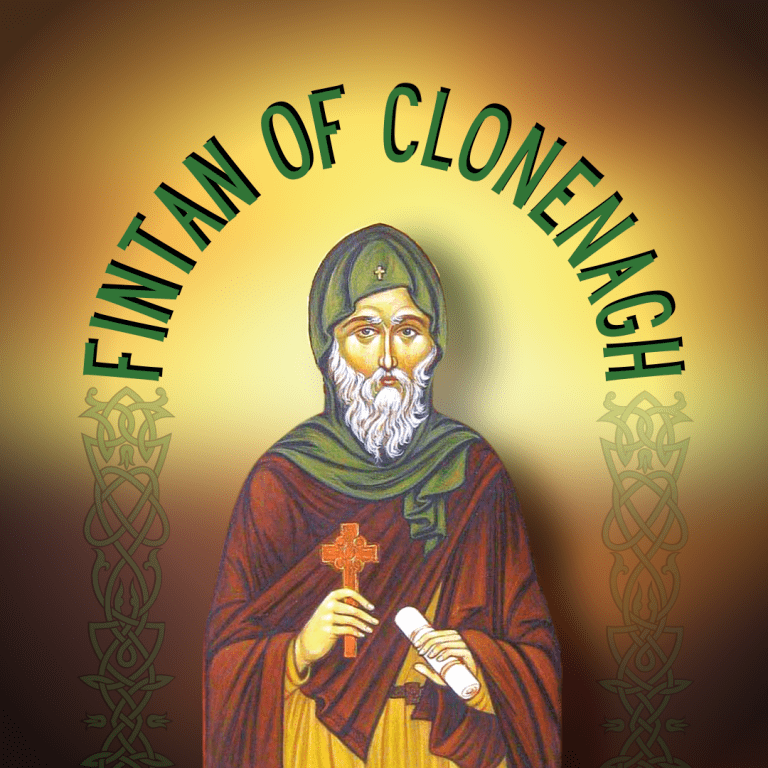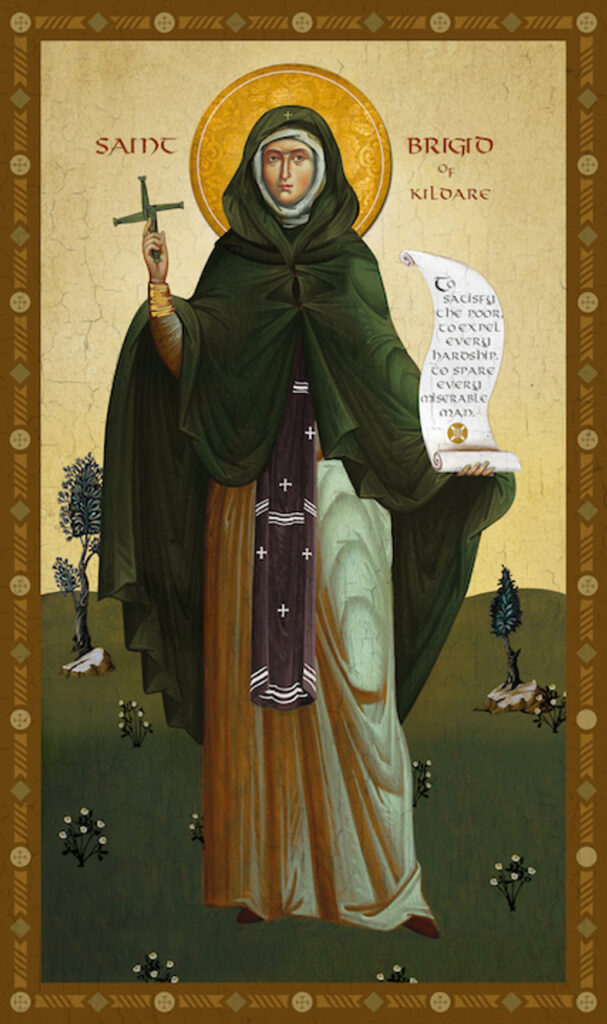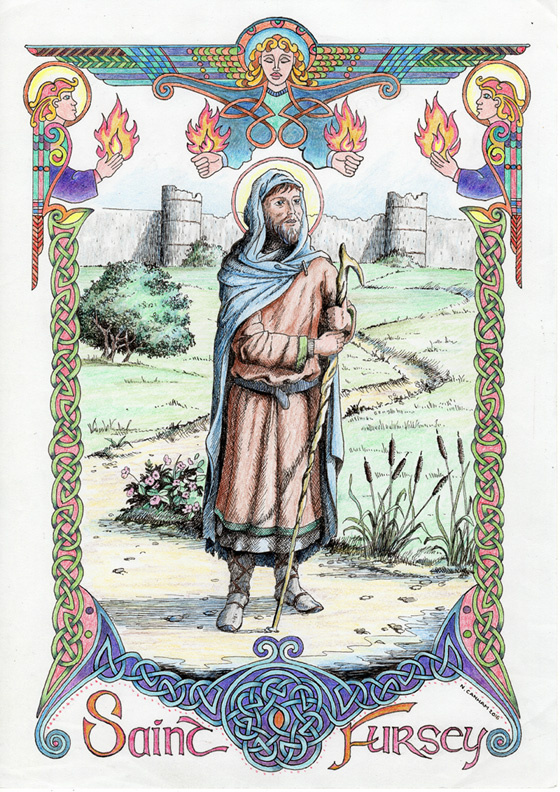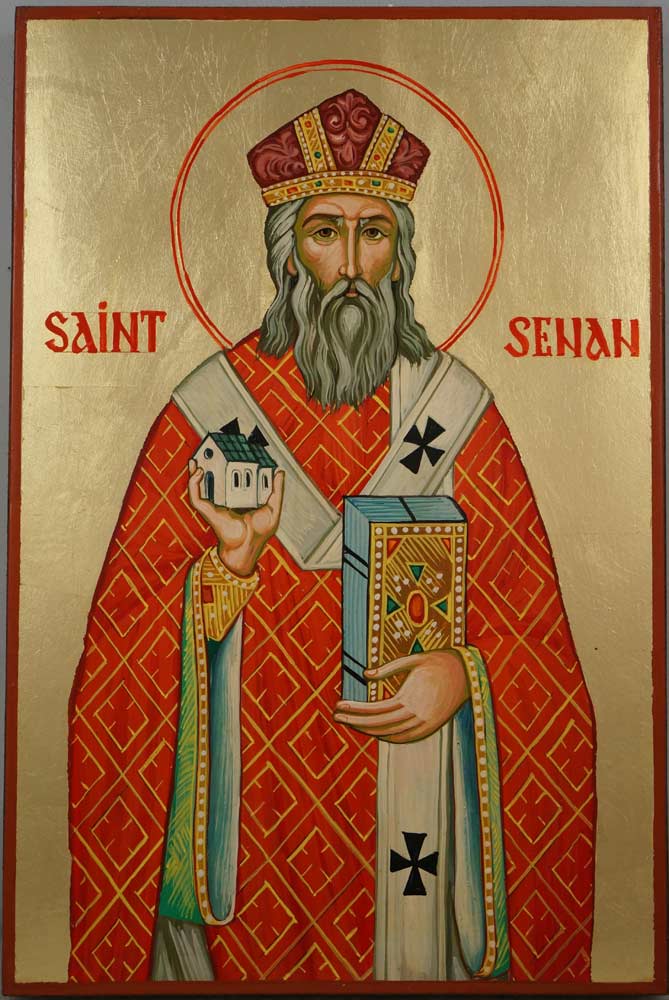
Image source Orthodox Icons
Material distilled for OrthoChristian.Com and Clare People
St. Senan, was a very notable Irish saints of his time. Senan is counted among “the twelve apostles of Ireland” whom were schooled under Saint Finnian of Clonard.
He was born around 488 A.D. of Christian parents Ercan & Congella in the fifth century close to Kilrush in today’s Co. Clare. His name “Senan” is old Gaelic for “a little wise elder”. The Irish word ‘’sean’’ pronounced ”shan”, usually denotes old or elder, before a noun; Seanan is a more original spelling, with the s & e together creating an ‘’sh’’ sound phonetically. The anglicized form of his name does not have the sh sound.
Senan’s birth was prophesised by St. Patrick to his parents Ercan & Congella. His mother Congella gave birth to him while sauntering through the woods. As she walked, her body went into labour. She quickly grasped a tree branch, which suddenly blossomed. It was a sign that Congella was to give birth to this holy man, called Seanán Mac gEircinn which in Irish means Senan son of Ercan.
At a young age, Senan pastored his father’s herds. When he grew older, he became a monk at a monastery in Kilrush. His spiritual guide was Cassidan until he was advanced enough to enter the monastery of Kilmanagh, Co. Kilkenny to conclude his formation under St. Natalis. When formation concluded, Senan was ordained a priest. He dived straight into active mission. Senan established his first monastery at Enniscorthy, Co. Wexford around 510 A.D. There is a townland called Templeshannon in Wexford that is named after Senan (“Senan’s Temple”).
He was a typical ‘’Peregrinatio Pro Christo’’, always on the pilgrim path for love of Christ. It is believed that St. Senan travelled to Rome and parts of present day France. He had stopped off at the great monastery of St. Martin of Tours, (cousin of St. Patrick). On his return trip to Ireland, Senan paid a visit to St. David in Wales, at Meniva. He then returned to Ireland in 520 A.D. to continue active apostolic mission.
He made a foundation at Inishcarra, near Cork where he was joined by some Italian monks. Eventually after 535 A.D. on the advice of a holy angel, Senan settled on Scattery Island (Inis Cathaigh), south of Kilrush quay, near the Shannon River estuary. Here he founded his most renowned monastery, containing five churches.
It was at Scattery island, where St. Senan drove away a giant sea monster from the island. The sea monster had long terrorized local inhabitants, making the island impassable. St. Senan first decisive action was to place all his hope in God, before the saint courageously approached the monster, making the sign of the cross while commanding it to depart in the name of Jesus, for all time.
With his miracles on tap, and his ascetic life style, he attracted a big following. They include St. Brendan the navigator. With so many disciple monks coming to Scattery, it gave ample opportunity to establishing other monasteries starting from small communities of twelve monks. Scattery Island in this way became the mother ship of Senan’s monasteries.
After his repose, Senan was buried on the Island at his principal monastery. He became venerated throughout Ireland down the ages. Today you can visit what is believed to be St. Sennan’s grave, known as “St. Senan’s bed” placed within a confined chapel space on the island of Scattery.
We celebrate St. Senan on the 8th of March
